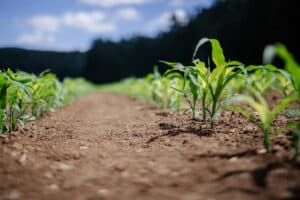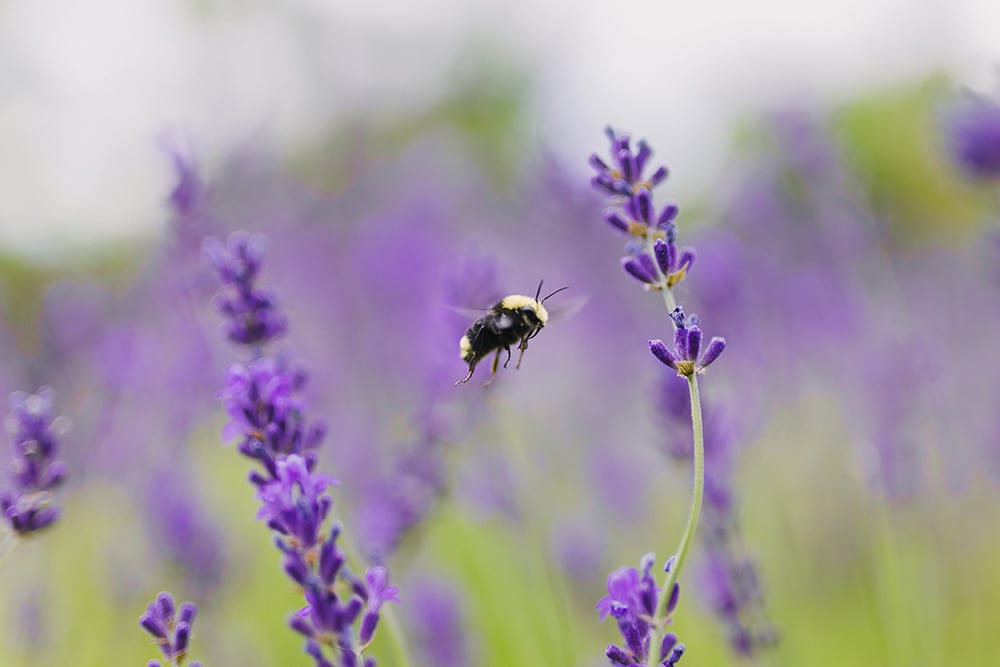How peptide-based
crop protection products work
(and why we need them)
Growers are increasingly challenged to protect the yield and quality of their crops in the face of growing insect resistance to traditional insecticidal products. This comes at a time when the expanding world population demands more and better sources of food and many jurisdictions are placing increased value on eco-friendly farming practices. All these factors create a generational challenge in agriculture… and a generational opportunity to find new and better ways to grow food sustainably.
Challenge: Understanding global food production
According to 2021 estimates made by the Food and Agriculture Organization (FAO), by 2050 we will need to produce between 50% -98% more food globally.1 The impact of rising populations – likely 9.3 billion by that point – puts pressure on all countries with respect to hunger, food inequality, nutritional deficiency and soil and water degradation.

The status quo of farming is no longer sustainable. We have limited natural resources, increasingly threatened ecosystems, and only so much arable land. In fact, the FAO predicts that around 80% of increased food production must come through productivity gains rather than land conversion.3
The need for innovation in the crop protection category
Investment is flooding into agriculture and ag-tech to meet the threat of these global food challenges. Technology is helping producers improve soil health, plant with precision, reduce labor and maximize yields. But the crop protection category has faced challenges over the past two decades, with fewer viable pesticide options available to growers due to increased insect resistance to existing modes of action. Existing products are also being banned in major markets due to health and environmental concerns. It’s a critical issue as between 20% to 40% of global crop production is lost annually to pests.4
Pests are increasingly showing resistance to the current active ingredients available, with a lack of new ones coming to market. Developing and introducing a new product is a scientifically challenging endeavor with an estimated cost of roughly $286 million USD and an 11 year timeframe.
Additionally, governments are increasingly discontinuing the use of chemicals that have played vital roles in crop protection due to potential impacts on farm workers, non-targeted organisms, soil and water, and consumers.6 For example, in 1996, organophosphates were phased out, and in 2019, the EPA canceled registration of twelve neonicotinoid-based products, another major chemistry in the fight against pests.
How small molecule (traditional synthetic) insecticides work
Most traditional synthetic insecticides on the market are made up of small molecules whose mode of action targets an insect’s nervous system. There are six key nerve and muscular receptors that account for most of such modes of action in insecticide products. Over time, many pest species have developed resistance to current product chemistries.

Without rapid innovation and alternative modes of action, growers cannot establish robust integrated pest management (IPM) plans to protect yield and quality. Additionally, small molecules are notoriously non-specific, often with unintended impact on non-targeted organisms including pollinators and other beneficials.
How biological insecticides work
Bio-derived insecticides are natural alternatives to chemical synthetics that are made from materials like plant extracts and pheromones, and disrupt pests by impacting their feeding, development and reproduction. The primary advantage of biologicals is their low environmental impact; but, they often lack the efficacy of synthetics.
Why larger molecule (peptide-based) insecticides are the answer
Peptide-based insecticides are classified as biological because they are derived from naturally occurring peptides (small proteins composed of amino acids). Yet, unlike traditional biological products, they are insecticidal, like synthetics, disrupting the nerve receptors of targeted pests. Vestaron Corporation has been able to identify, isolate, and manufacture peptides that occur in nature – such as spider venom – that are inherently highly targeted for specific insects.
As the size of a peptide molecule sits between a synthetic (effective but non-specific to the target pest) and a biological (environmentally safe but less effective at controlling pests), it offers comparable efficacy to synthetics with less impact on non-targeted organisms and the environment.8
Best of both worlds: the proven advantages of peptide-based products in the field
Using peptide-based crop protection products provides a sustainable and effective way to safeguard yields and crop quality from pest pressures (visit the Vestaron website for more on sustainability impacts). This approach delivers lower soil and water residues, lower impact to unintended organisms, and less concern for consumers from chemical residue on food crops.
This has major implications for growers as well: with a four-hour re-entry interval (REI), zero-day pre-harvest interval (PHI), and a MRL exemption (residue levels that do not pose risk to humans), using peptide-based products means less downtime for an operation and a safer work environment for farm workers and in-field specialists. For crops that rely on pollinators and other beneficials, peptide-based products are friendly with no logistical need to move pollinators for spray time. Having more novel modes of action available also increases rotation options to fight resistance and build better harvests without needing more land.

The use of natural insecticidal materials in crop protection isn’t a new idea, but with Vestaron’s ability to rapidly identify peptides with high efficacy and novel modes of action, replicate, and manufacture at scale (using natural fermentation), it’s able to get effective new products into growers’ hands. It’s a giant step toward more sustainable – and effective – crop protection.
To learn more about the history of research and development at Vestaron, check out The Origin Story.
References
1,3 CropLife 2021 https://croplife.org/news/sustainable-food-systems-a-world-map-of-rising-yields/
2 Food and Agriculture Organization https://www.un.org/en/chronicle/article/feeding-world-sustainably#:~:text=According%20to%20estimates%20compiled%20by,toll%20on%20our%20natural%20resources.
4 Food and Agriculture Organization 2019 FAO 2019 https://www.fao.org/news/story/en/item/1187738/icode/
5 The Cost of New Agrochemical Product Discovery, Development and Registration in 1995, 2000, 2005-2008 and 2010-2014; R&D expenditure in 2014 and expectations for 2019. Phillips McDougall. March 2016. https://croplife-r9qnrxt3qxgjra4.netdna-ssl.com/wp-content/uploads/2016/04/Cost-of-CP-report-FINAL.pdf
6 EU Government Office for Science, New Innovative Approaches to Crop Protection 2013 https://assets.publishing.service.gov.uk/government/uploads/system/uploads/attachment_data/file/278446/13-892-innovative-approaches-crop-protection.pdf.
7,8 North Carolina Biotechnology Centre, Vestaron’s Peptide Insecticides: Bad for Bugs, Safe for Bees https://www.ncbiotech.org/news/vestarons-peptide-insecticides-bad-bugs-safe-bees
MEDIA CONTACTS:
Ben Cicora, SVP Sales & Marketing • 970.443.9220 • bcicora@vestaron.com
Steve Betz, VP Communications • 515.707.6096 • sbetz@vestaron.com

